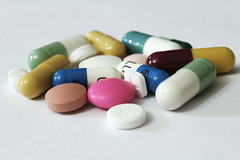 It isn’t just that expensive wine is more enjoyable, but actually paying more for wine makes it more enjoyable. Researchers from CalTech and Stanford found that the brain’s pleasure centre has more activity when tasting $90 wine compared with $10 wine, even when it is exactly the same wine.
It isn’t just that expensive wine is more enjoyable, but actually paying more for wine makes it more enjoyable. Researchers from CalTech and Stanford found that the brain’s pleasure centre has more activity when tasting $90 wine compared with $10 wine, even when it is exactly the same wine.
I find it amazing that the brain has such sway over the body, but it’s something that the advertising industry has known for ages.
In Malcolm Gladwell’s Blink, I first read about the work of Louis Cheskin, whose work in advertising since the 1930s was revolutionary. His theory of sensation transference was used to design product packaging that would change the way people felt about, and even experienced the product. In one example with underarm deodorants, Cheskin sent the same identical formulation to testers in three different packs with unique colour schemes. The testers consistently reported differences in fragrance and effectiveness, and one colour scheme even resulted in rashes. Cheskin’s consultancy group was named the Color Research Institute, for obvious reasons.
So, given this background, I shouldn’t have been surprised by a recent article in Wired Magazine on placebos. It reported that the “placebo effect” is not a single effect at all, and using different colours or shapes of a pill can make that pill more or less effective in its treatment, even if that pill is just a sugar pill. In other words, the packaging of drugs, whether it is the form of the pills, or the design of the box, or how the medical practitioner gives it to a patient, can change how well a drug works.
While the placebo effect is associated with snake oil, it is considered to operate equally on legitimate drugs. That’s why in clinical trials, the main hurdle is to achieve levels of effectiveness higher than a placebo. But since the placebo effect itself can be made stronger or weaker, or achieve particular effects, you could imagine a trial where the placebo is chosen to have a weak effect so the drug stands a better chance of succeeding at trial. In fact, the Wired article claims that the placebo effect has become stronger recently, making it harder for drug trials to succeed. I can see a more worthwhile application of the placebo effect being to tailor packaging so that not only does it add to the drug’s effectiveness, but may even offset side-effects.
Perhaps in the future, the list of active ingredients on a drug’s packaging will also need to include aspects of the packaging like colour or shape. I may choose to avoid my paracetamol tablets if they are blue because it upsets my stomach. However, there’s one piece of information that’s already on the packaging that may yet be proven to work for other drugs (as it works for alcohol): the price.
And I will leave you with the thought that if more expensive drugs turn out to be more effective (purely on that basis), then may heavy subsidies of certain drugs be causing more harm than good?
![Reblog this post [with Zemanta]](http://img.zemanta.com/reblog_e.png?x-id=bb752fa5-e3b0-476e-996c-3a89da39ec2d)